Peru · Regions · South America
5 great reasons to visit northern Peru
Northern Peru has been neglected by Western visitors for years, often overlooked for the more developed south, and the lure of Machu Picchu. But the times they are a-changin’, and Peru’s little-known north is rapidly becoming one of South America’s up-and-coming destinations.
Some of Audley’s Peru specialists recently took a trip to the region, and here they have attempted to define — in no particular order — the places and experiences which particularly spoke to them. Think barely excavated and impossibly remote ruins, a quaint colonial town to rival Cuzco (without its concomitant busyness) and untouched, raw landscapes where birdlife thrives.
The temple complex of El Brujo
An hour or so out of Trujillo, you turn off the Pan-American Highway onto a minor road that winds through waving seas of sugar cane and stubby asparagus plantations. Suddenly, the greenery transitions abruptly back into desert, and the Temple Cao — a stepped pyramid complex created by the Moche culture — hoves into view, framed by the vast grey expanse of the churning Pacific Ocean. It’s an improbably positioned archaeological site, rising out of the middle of nowhere, and the discoveries made here as just as disquieting and intriguing as its name (‘the wizard’).
 The Moche tradition was to build over and around the preceding generation’s temple, so today the main structure unpeels before your eyes as a series of nested pyramids. The carved friezes decorating each layer, now much faded, are still garishly detailed: one shows a chain-gang of prisoners, another the diabolic face of Moche god Ai Apaec, his garish, toothed visage surrounded by spiders.
Delving deeper into the complex, you’ll see several tombs littered with desiccated carob tree driftwood, until you come to that of the site’s most famous resident: a shamanic female priest nicknamed the Lady of Cao. She was found buried in one of the temple’s upper tiers, the remains of a strangled 15-year-old female at her side, and the walls around her resting place have the most intricate bas-reliefs of the lot: once painted in bright primary shades, they depict weirdly contemporary-looking geometric designs of pelicans and fish.
Just outside of the site, encased in a museum so heavily fortified it looks like a bank vault, lies the Lady’s extremely well-preserved mummified remains. So well-preserved, in fact, you can see that her limbs were once adorned with animal tattoos.
Cajamarca
Cajamarca has a feel of Cuzco about it. It’s a well-preserved colonial town which crouches below high mountain ranges in a sheltered valley, and it’s punctuated by a historic core of cobbled streets as well as a large cathedral-fronted central plaza that’s bedecked with a fountain and flowerbeds. The plaza acts as a sort of open-air living room, with townsfolk coming to sit on the benches or grass, smoke, chat, and play with their children. But unlike Cuzco, it has yet to be overrun with overseas visitors. You’ll definitely hear more Spanish than English here.
The Moche tradition was to build over and around the preceding generation’s temple, so today the main structure unpeels before your eyes as a series of nested pyramids. The carved friezes decorating each layer, now much faded, are still garishly detailed: one shows a chain-gang of prisoners, another the diabolic face of Moche god Ai Apaec, his garish, toothed visage surrounded by spiders.
Delving deeper into the complex, you’ll see several tombs littered with desiccated carob tree driftwood, until you come to that of the site’s most famous resident: a shamanic female priest nicknamed the Lady of Cao. She was found buried in one of the temple’s upper tiers, the remains of a strangled 15-year-old female at her side, and the walls around her resting place have the most intricate bas-reliefs of the lot: once painted in bright primary shades, they depict weirdly contemporary-looking geometric designs of pelicans and fish.
Just outside of the site, encased in a museum so heavily fortified it looks like a bank vault, lies the Lady’s extremely well-preserved mummified remains. So well-preserved, in fact, you can see that her limbs were once adorned with animal tattoos.
Cajamarca
Cajamarca has a feel of Cuzco about it. It’s a well-preserved colonial town which crouches below high mountain ranges in a sheltered valley, and it’s punctuated by a historic core of cobbled streets as well as a large cathedral-fronted central plaza that’s bedecked with a fountain and flowerbeds. The plaza acts as a sort of open-air living room, with townsfolk coming to sit on the benches or grass, smoke, chat, and play with their children. But unlike Cuzco, it has yet to be overrun with overseas visitors. You’ll definitely hear more Spanish than English here.
 The central area has several intriguing spots, from a museum devoted to religious Andean art from the 16th to 18th centuries, to a former 18th-century hospital complex. (Look out for the niches built into the walls which acted as the patients’ rooms.) The cathedral, meanwhile, has an ostentatious Churrigueresque altar.
Most unusual of all is the shell of an Inca room built in immaculately tessellated stonework, the Cuarto del Rescate (Ransom Room). It was this space which Inca emperor Atahualpa promised to fill with gold in exchange for his freedom. Other Inca-related ruins remain, too: just a short walk from the Plaza de Armas lies Santa Apolonia Hill, where you’ll find a stone once believed to have been used by the Incas for sacrifices.
Then, a 45-minute drive into the mountains (and then a blustery short hike) brings you to the well-restored remains of a Pre-Inca sacred aqueduct or canal, Cumbe Mayo. Be sure to visit in the morning (rain and wind can set in in the afternoon). In places, you’ll see how the channel has been cut through vast boulders, a feat when you consider that only obsidian and sandstone tools were available.
Scenic drives and birdwatching opportunities
If you’re going to really travel around northern Peru, you need to be prepared for some long drives. But this is no bad thing: there’s often a lot to see.
The central area has several intriguing spots, from a museum devoted to religious Andean art from the 16th to 18th centuries, to a former 18th-century hospital complex. (Look out for the niches built into the walls which acted as the patients’ rooms.) The cathedral, meanwhile, has an ostentatious Churrigueresque altar.
Most unusual of all is the shell of an Inca room built in immaculately tessellated stonework, the Cuarto del Rescate (Ransom Room). It was this space which Inca emperor Atahualpa promised to fill with gold in exchange for his freedom. Other Inca-related ruins remain, too: just a short walk from the Plaza de Armas lies Santa Apolonia Hill, where you’ll find a stone once believed to have been used by the Incas for sacrifices.
Then, a 45-minute drive into the mountains (and then a blustery short hike) brings you to the well-restored remains of a Pre-Inca sacred aqueduct or canal, Cumbe Mayo. Be sure to visit in the morning (rain and wind can set in in the afternoon). In places, you’ll see how the channel has been cut through vast boulders, a feat when you consider that only obsidian and sandstone tools were available.
Scenic drives and birdwatching opportunities
If you’re going to really travel around northern Peru, you need to be prepared for some long drives. But this is no bad thing: there’s often a lot to see.
 In the highlands, especially en route to the Chachapoyas region, you’ll be treated to sweeping Andean vistas, mountainsides speckled in indigo and pink from jacaranda and wild bougainvillea, and little vignettes of local people weaving by the roadside. You might see them carrying firewood (or crops, or their babies) in bright zig-zag-patterned shawls, or leading livestock. Sometimes, the livestock goes a bit AWOL: it’s normal to come across a couple of ponies, some cattle, pigs and goats when negotiating the mountain roads. They hardly bat an eyelid as you creep past.
In other areas, the roads are so quiet, your guide may suggest you get out and walk for a stretch. Sometimes, if you peer into nearby rock faces, you’ll see the tunnels of tarantulas, their entranceways meshed with thick, white webbing. You might spot them scuttling across the road.
Vast swathes of northern Peru also offer prime birdwatching, whether that’s looking for the spatuletail hummingbird in the cloudforest of the Leymebamba and Chachapoya region, or observing the avifauna that inhabits the dry forest closer to the north’s dusty coastline. When exploring desert archaeological sites, you have a good chance of seeing burrowing owls and vermilion flycatchers. Peru’s national bird, the elusive cock-of-the-rock, also inhabits the forests around the Gocta Waterfalls (near Chachaopyas): its flame-like scarlet head plumage is even more dazzlingly bright in real life.
Kuélap
Straddling an escarpment in a great bowl of forested mountains, Kuélap’s strategic vantage point and immense 20 m (66 ft) backfilled limestone walls suggests that this Chachaopoya-built site was once a fortress. But the discovery of many human remains points to another theory: a ceremonial or religious hub, even a necropolis.
In the highlands, especially en route to the Chachapoyas region, you’ll be treated to sweeping Andean vistas, mountainsides speckled in indigo and pink from jacaranda and wild bougainvillea, and little vignettes of local people weaving by the roadside. You might see them carrying firewood (or crops, or their babies) in bright zig-zag-patterned shawls, or leading livestock. Sometimes, the livestock goes a bit AWOL: it’s normal to come across a couple of ponies, some cattle, pigs and goats when negotiating the mountain roads. They hardly bat an eyelid as you creep past.
In other areas, the roads are so quiet, your guide may suggest you get out and walk for a stretch. Sometimes, if you peer into nearby rock faces, you’ll see the tunnels of tarantulas, their entranceways meshed with thick, white webbing. You might spot them scuttling across the road.
Vast swathes of northern Peru also offer prime birdwatching, whether that’s looking for the spatuletail hummingbird in the cloudforest of the Leymebamba and Chachapoya region, or observing the avifauna that inhabits the dry forest closer to the north’s dusty coastline. When exploring desert archaeological sites, you have a good chance of seeing burrowing owls and vermilion flycatchers. Peru’s national bird, the elusive cock-of-the-rock, also inhabits the forests around the Gocta Waterfalls (near Chachaopyas): its flame-like scarlet head plumage is even more dazzlingly bright in real life.
Kuélap
Straddling an escarpment in a great bowl of forested mountains, Kuélap’s strategic vantage point and immense 20 m (66 ft) backfilled limestone walls suggests that this Chachaopoya-built site was once a fortress. But the discovery of many human remains points to another theory: a ceremonial or religious hub, even a necropolis.
 Then, amid its fairytale-like drystone roundhouses and watchtowers you’ll find the remains of a kallanka (long house) and an usnu (ceremonial platform). The last two are Inca structures, rather than Chachapoyan, suggesting that Kuélap’s role changed over time: did the Incas invade?
Whatever its function, the site has its own freight of myth. A giant allegedly leapt across a mountain pass and executed 130 people there with a single hammer blow to the head. Much later — when this myth was already widely known among local people — a German archaeologist found the remains of 130 individuals buried at the site. All seemed to have died from a single blow to the skull.
Kuélap is best visited first thing in the morning, before the first major influx of visitors arrive at around 11am. A cable car takes you over a yawning mountain gully to the foot of the site, and as the first of its kind in Peru, it’s pulling in many domestic tourists keen to experience the sensation of this mode of transport.
Hiking to Gocta Waterfalls
Although relatively accessible via a 45-minute drive from the town of Chachapoyas, the two-tiered cataracts of Gocta feel remote, like you’re viewing the mist-veiled endpoint of a Boy’s Own Adventure story. First glimpsed from the hamlet of Cocachimba, they stream down an exposed rock face. The path to their plunge pool takes you through tropical forest dense with tree ferns and lianas, moves swiftly past the ramshackle remains of smallholdings, traverses gullies and streams, and climbs up and down several steep slopes.
Then, amid its fairytale-like drystone roundhouses and watchtowers you’ll find the remains of a kallanka (long house) and an usnu (ceremonial platform). The last two are Inca structures, rather than Chachapoyan, suggesting that Kuélap’s role changed over time: did the Incas invade?
Whatever its function, the site has its own freight of myth. A giant allegedly leapt across a mountain pass and executed 130 people there with a single hammer blow to the head. Much later — when this myth was already widely known among local people — a German archaeologist found the remains of 130 individuals buried at the site. All seemed to have died from a single blow to the skull.
Kuélap is best visited first thing in the morning, before the first major influx of visitors arrive at around 11am. A cable car takes you over a yawning mountain gully to the foot of the site, and as the first of its kind in Peru, it’s pulling in many domestic tourists keen to experience the sensation of this mode of transport.
Hiking to Gocta Waterfalls
Although relatively accessible via a 45-minute drive from the town of Chachapoyas, the two-tiered cataracts of Gocta feel remote, like you’re viewing the mist-veiled endpoint of a Boy’s Own Adventure story. First glimpsed from the hamlet of Cocachimba, they stream down an exposed rock face. The path to their plunge pool takes you through tropical forest dense with tree ferns and lianas, moves swiftly past the ramshackle remains of smallholdings, traverses gullies and streams, and climbs up and down several steep slopes.
 Once you reach the plunge basin, the powerful torrents of water cascading down make it impossible to approach the pool without getting a soaking. Instead, you can choose the admire the spectacle from a higher vantage point, while listening to your guide recount the story of a mermaid once believed to dwell in the pool’s murky depths. Even now, some superstitious locals won’t set foot there.
Craig Burkinshaw is Founder of Audley Travel.
If you would like to be a guest blogger on A Luxury Travel Blog in order to raise your profile, please contact us.
Once you reach the plunge basin, the powerful torrents of water cascading down make it impossible to approach the pool without getting a soaking. Instead, you can choose the admire the spectacle from a higher vantage point, while listening to your guide recount the story of a mermaid once believed to dwell in the pool’s murky depths. Even now, some superstitious locals won’t set foot there.
Craig Burkinshaw is Founder of Audley Travel.
If you would like to be a guest blogger on A Luxury Travel Blog in order to raise your profile, please contact us.
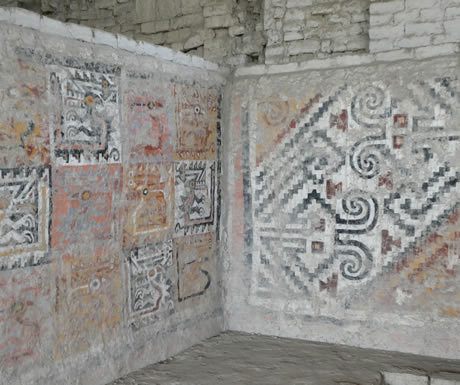 The Moche tradition was to build over and around the preceding generation’s temple, so today the main structure unpeels before your eyes as a series of nested pyramids. The carved friezes decorating each layer, now much faded, are still garishly detailed: one shows a chain-gang of prisoners, another the diabolic face of Moche god Ai Apaec, his garish, toothed visage surrounded by spiders.
Delving deeper into the complex, you’ll see several tombs littered with desiccated carob tree driftwood, until you come to that of the site’s most famous resident: a shamanic female priest nicknamed the Lady of Cao. She was found buried in one of the temple’s upper tiers, the remains of a strangled 15-year-old female at her side, and the walls around her resting place have the most intricate bas-reliefs of the lot: once painted in bright primary shades, they depict weirdly contemporary-looking geometric designs of pelicans and fish.
Just outside of the site, encased in a museum so heavily fortified it looks like a bank vault, lies the Lady’s extremely well-preserved mummified remains. So well-preserved, in fact, you can see that her limbs were once adorned with animal tattoos.
Cajamarca
Cajamarca has a feel of Cuzco about it. It’s a well-preserved colonial town which crouches below high mountain ranges in a sheltered valley, and it’s punctuated by a historic core of cobbled streets as well as a large cathedral-fronted central plaza that’s bedecked with a fountain and flowerbeds. The plaza acts as a sort of open-air living room, with townsfolk coming to sit on the benches or grass, smoke, chat, and play with their children. But unlike Cuzco, it has yet to be overrun with overseas visitors. You’ll definitely hear more Spanish than English here.
The Moche tradition was to build over and around the preceding generation’s temple, so today the main structure unpeels before your eyes as a series of nested pyramids. The carved friezes decorating each layer, now much faded, are still garishly detailed: one shows a chain-gang of prisoners, another the diabolic face of Moche god Ai Apaec, his garish, toothed visage surrounded by spiders.
Delving deeper into the complex, you’ll see several tombs littered with desiccated carob tree driftwood, until you come to that of the site’s most famous resident: a shamanic female priest nicknamed the Lady of Cao. She was found buried in one of the temple’s upper tiers, the remains of a strangled 15-year-old female at her side, and the walls around her resting place have the most intricate bas-reliefs of the lot: once painted in bright primary shades, they depict weirdly contemporary-looking geometric designs of pelicans and fish.
Just outside of the site, encased in a museum so heavily fortified it looks like a bank vault, lies the Lady’s extremely well-preserved mummified remains. So well-preserved, in fact, you can see that her limbs were once adorned with animal tattoos.
Cajamarca
Cajamarca has a feel of Cuzco about it. It’s a well-preserved colonial town which crouches below high mountain ranges in a sheltered valley, and it’s punctuated by a historic core of cobbled streets as well as a large cathedral-fronted central plaza that’s bedecked with a fountain and flowerbeds. The plaza acts as a sort of open-air living room, with townsfolk coming to sit on the benches or grass, smoke, chat, and play with their children. But unlike Cuzco, it has yet to be overrun with overseas visitors. You’ll definitely hear more Spanish than English here.
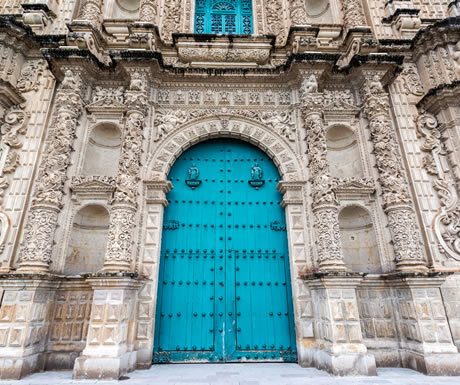 The central area has several intriguing spots, from a museum devoted to religious Andean art from the 16th to 18th centuries, to a former 18th-century hospital complex. (Look out for the niches built into the walls which acted as the patients’ rooms.) The cathedral, meanwhile, has an ostentatious Churrigueresque altar.
Most unusual of all is the shell of an Inca room built in immaculately tessellated stonework, the Cuarto del Rescate (Ransom Room). It was this space which Inca emperor Atahualpa promised to fill with gold in exchange for his freedom. Other Inca-related ruins remain, too: just a short walk from the Plaza de Armas lies Santa Apolonia Hill, where you’ll find a stone once believed to have been used by the Incas for sacrifices.
Then, a 45-minute drive into the mountains (and then a blustery short hike) brings you to the well-restored remains of a Pre-Inca sacred aqueduct or canal, Cumbe Mayo. Be sure to visit in the morning (rain and wind can set in in the afternoon). In places, you’ll see how the channel has been cut through vast boulders, a feat when you consider that only obsidian and sandstone tools were available.
Scenic drives and birdwatching opportunities
If you’re going to really travel around northern Peru, you need to be prepared for some long drives. But this is no bad thing: there’s often a lot to see.
The central area has several intriguing spots, from a museum devoted to religious Andean art from the 16th to 18th centuries, to a former 18th-century hospital complex. (Look out for the niches built into the walls which acted as the patients’ rooms.) The cathedral, meanwhile, has an ostentatious Churrigueresque altar.
Most unusual of all is the shell of an Inca room built in immaculately tessellated stonework, the Cuarto del Rescate (Ransom Room). It was this space which Inca emperor Atahualpa promised to fill with gold in exchange for his freedom. Other Inca-related ruins remain, too: just a short walk from the Plaza de Armas lies Santa Apolonia Hill, where you’ll find a stone once believed to have been used by the Incas for sacrifices.
Then, a 45-minute drive into the mountains (and then a blustery short hike) brings you to the well-restored remains of a Pre-Inca sacred aqueduct or canal, Cumbe Mayo. Be sure to visit in the morning (rain and wind can set in in the afternoon). In places, you’ll see how the channel has been cut through vast boulders, a feat when you consider that only obsidian and sandstone tools were available.
Scenic drives and birdwatching opportunities
If you’re going to really travel around northern Peru, you need to be prepared for some long drives. But this is no bad thing: there’s often a lot to see.
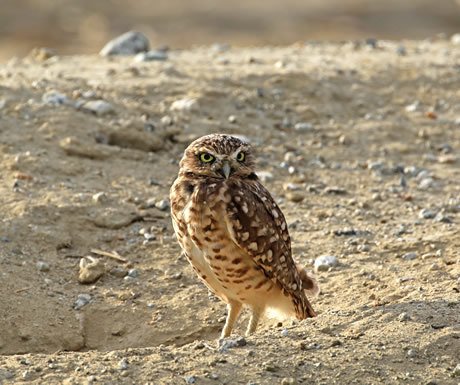 In the highlands, especially en route to the Chachapoyas region, you’ll be treated to sweeping Andean vistas, mountainsides speckled in indigo and pink from jacaranda and wild bougainvillea, and little vignettes of local people weaving by the roadside. You might see them carrying firewood (or crops, or their babies) in bright zig-zag-patterned shawls, or leading livestock. Sometimes, the livestock goes a bit AWOL: it’s normal to come across a couple of ponies, some cattle, pigs and goats when negotiating the mountain roads. They hardly bat an eyelid as you creep past.
In other areas, the roads are so quiet, your guide may suggest you get out and walk for a stretch. Sometimes, if you peer into nearby rock faces, you’ll see the tunnels of tarantulas, their entranceways meshed with thick, white webbing. You might spot them scuttling across the road.
Vast swathes of northern Peru also offer prime birdwatching, whether that’s looking for the spatuletail hummingbird in the cloudforest of the Leymebamba and Chachapoya region, or observing the avifauna that inhabits the dry forest closer to the north’s dusty coastline. When exploring desert archaeological sites, you have a good chance of seeing burrowing owls and vermilion flycatchers. Peru’s national bird, the elusive cock-of-the-rock, also inhabits the forests around the Gocta Waterfalls (near Chachaopyas): its flame-like scarlet head plumage is even more dazzlingly bright in real life.
Kuélap
Straddling an escarpment in a great bowl of forested mountains, Kuélap’s strategic vantage point and immense 20 m (66 ft) backfilled limestone walls suggests that this Chachaopoya-built site was once a fortress. But the discovery of many human remains points to another theory: a ceremonial or religious hub, even a necropolis.
In the highlands, especially en route to the Chachapoyas region, you’ll be treated to sweeping Andean vistas, mountainsides speckled in indigo and pink from jacaranda and wild bougainvillea, and little vignettes of local people weaving by the roadside. You might see them carrying firewood (or crops, or their babies) in bright zig-zag-patterned shawls, or leading livestock. Sometimes, the livestock goes a bit AWOL: it’s normal to come across a couple of ponies, some cattle, pigs and goats when negotiating the mountain roads. They hardly bat an eyelid as you creep past.
In other areas, the roads are so quiet, your guide may suggest you get out and walk for a stretch. Sometimes, if you peer into nearby rock faces, you’ll see the tunnels of tarantulas, their entranceways meshed with thick, white webbing. You might spot them scuttling across the road.
Vast swathes of northern Peru also offer prime birdwatching, whether that’s looking for the spatuletail hummingbird in the cloudforest of the Leymebamba and Chachapoya region, or observing the avifauna that inhabits the dry forest closer to the north’s dusty coastline. When exploring desert archaeological sites, you have a good chance of seeing burrowing owls and vermilion flycatchers. Peru’s national bird, the elusive cock-of-the-rock, also inhabits the forests around the Gocta Waterfalls (near Chachaopyas): its flame-like scarlet head plumage is even more dazzlingly bright in real life.
Kuélap
Straddling an escarpment in a great bowl of forested mountains, Kuélap’s strategic vantage point and immense 20 m (66 ft) backfilled limestone walls suggests that this Chachaopoya-built site was once a fortress. But the discovery of many human remains points to another theory: a ceremonial or religious hub, even a necropolis.
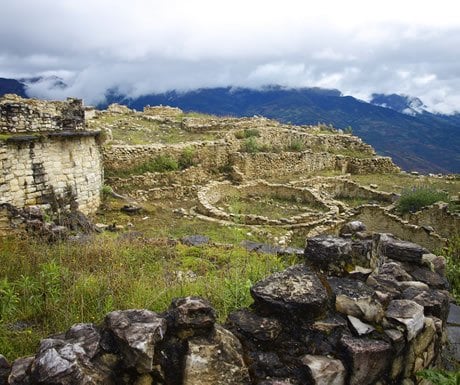 Then, amid its fairytale-like drystone roundhouses and watchtowers you’ll find the remains of a kallanka (long house) and an usnu (ceremonial platform). The last two are Inca structures, rather than Chachapoyan, suggesting that Kuélap’s role changed over time: did the Incas invade?
Whatever its function, the site has its own freight of myth. A giant allegedly leapt across a mountain pass and executed 130 people there with a single hammer blow to the head. Much later — when this myth was already widely known among local people — a German archaeologist found the remains of 130 individuals buried at the site. All seemed to have died from a single blow to the skull.
Kuélap is best visited first thing in the morning, before the first major influx of visitors arrive at around 11am. A cable car takes you over a yawning mountain gully to the foot of the site, and as the first of its kind in Peru, it’s pulling in many domestic tourists keen to experience the sensation of this mode of transport.
Hiking to Gocta Waterfalls
Although relatively accessible via a 45-minute drive from the town of Chachapoyas, the two-tiered cataracts of Gocta feel remote, like you’re viewing the mist-veiled endpoint of a Boy’s Own Adventure story. First glimpsed from the hamlet of Cocachimba, they stream down an exposed rock face. The path to their plunge pool takes you through tropical forest dense with tree ferns and lianas, moves swiftly past the ramshackle remains of smallholdings, traverses gullies and streams, and climbs up and down several steep slopes.
Then, amid its fairytale-like drystone roundhouses and watchtowers you’ll find the remains of a kallanka (long house) and an usnu (ceremonial platform). The last two are Inca structures, rather than Chachapoyan, suggesting that Kuélap’s role changed over time: did the Incas invade?
Whatever its function, the site has its own freight of myth. A giant allegedly leapt across a mountain pass and executed 130 people there with a single hammer blow to the head. Much later — when this myth was already widely known among local people — a German archaeologist found the remains of 130 individuals buried at the site. All seemed to have died from a single blow to the skull.
Kuélap is best visited first thing in the morning, before the first major influx of visitors arrive at around 11am. A cable car takes you over a yawning mountain gully to the foot of the site, and as the first of its kind in Peru, it’s pulling in many domestic tourists keen to experience the sensation of this mode of transport.
Hiking to Gocta Waterfalls
Although relatively accessible via a 45-minute drive from the town of Chachapoyas, the two-tiered cataracts of Gocta feel remote, like you’re viewing the mist-veiled endpoint of a Boy’s Own Adventure story. First glimpsed from the hamlet of Cocachimba, they stream down an exposed rock face. The path to their plunge pool takes you through tropical forest dense with tree ferns and lianas, moves swiftly past the ramshackle remains of smallholdings, traverses gullies and streams, and climbs up and down several steep slopes.
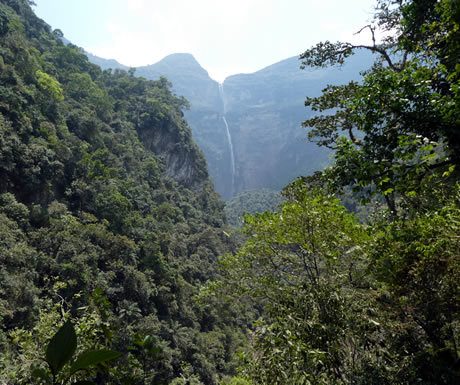 Once you reach the plunge basin, the powerful torrents of water cascading down make it impossible to approach the pool without getting a soaking. Instead, you can choose the admire the spectacle from a higher vantage point, while listening to your guide recount the story of a mermaid once believed to dwell in the pool’s murky depths. Even now, some superstitious locals won’t set foot there.
Craig Burkinshaw is Founder of Audley Travel.
If you would like to be a guest blogger on A Luxury Travel Blog in order to raise your profile, please contact us.
Once you reach the plunge basin, the powerful torrents of water cascading down make it impossible to approach the pool without getting a soaking. Instead, you can choose the admire the spectacle from a higher vantage point, while listening to your guide recount the story of a mermaid once believed to dwell in the pool’s murky depths. Even now, some superstitious locals won’t set foot there.
Craig Burkinshaw is Founder of Audley Travel.
If you would like to be a guest blogger on A Luxury Travel Blog in order to raise your profile, please contact us.Did you enjoy this article?
Receive similar content direct to your inbox.


All the spots look beautiful Craig. I just visited Cusco and Lima a few years back but would dig Cajamarca. Actually, I loved Cusco because I stayed in a Peruvian neighborhood about a 45 minute walk from La Plaza de Armas, well outside the heavily touristed town center. Awesome spot. I felt like I was in Peru, with nobody speaking English. I relied on my somewhat fluent Spanish for that week stretch which was fun, challenging and heck, just plain made for an authentic experience.
I’d love seeing those tarantulas and the cock of the rock birds too. Stunning wildlife down there.
Ryan